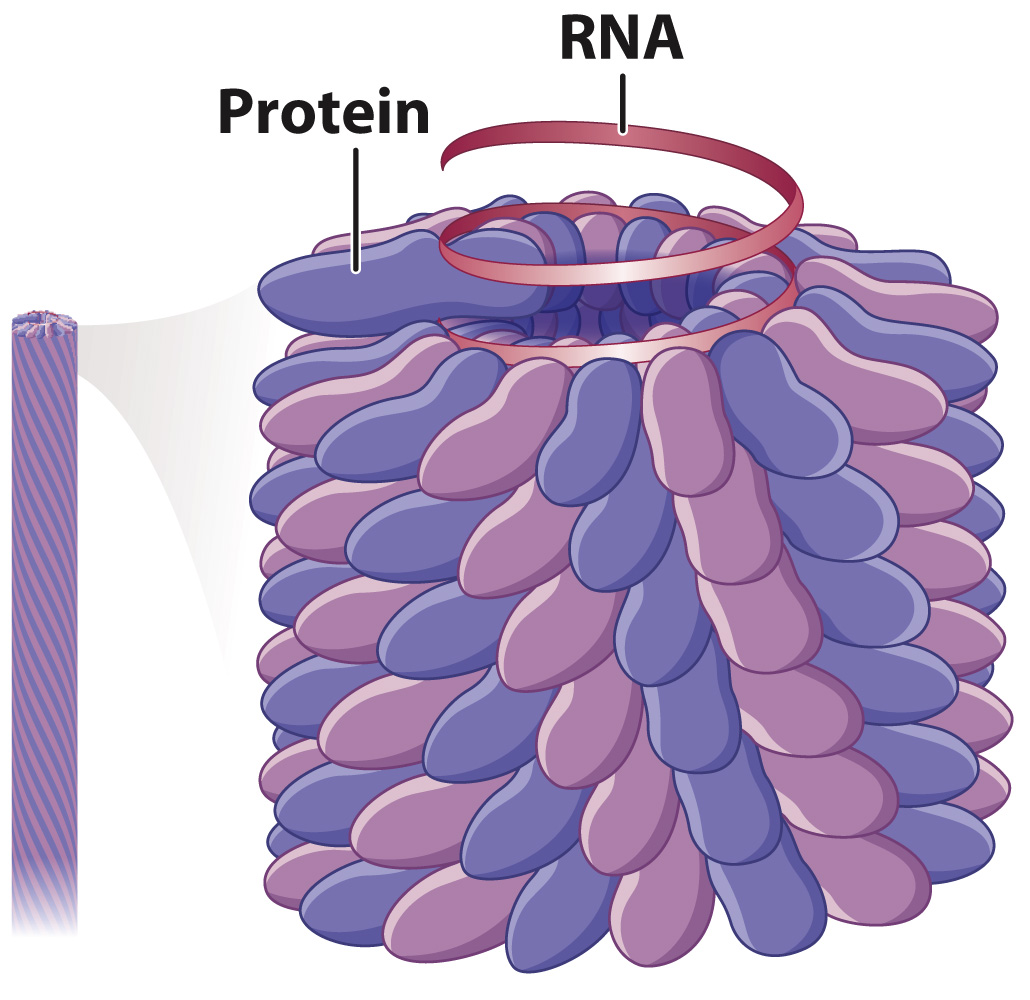Viruses are capable of self-assembly.

FIG. 13.19 Tobacco mosaic virus. The protein and RNA components assemble themselves inside a cell.
The genome of a virus contains the genetic information needed to specify all the structural components of the virus. Progeny virus particles are formed according to molecular self-assembly: When the viral components are present in the proper relative amounts and under the right conditions, the components interact spontaneously to assemble themselves into the mature virus particle.
Tobacco mosaic virus illustrates the process of self-assembly. In the earliest stages, the coat-protein monomers assemble into two circular layers forming a cylindrical disk. This disk binds with the RNA genome, and the combined structure forms the substrate for polymerization of all the other protein monomers into a helical filament that incorporates the rest of the RNA as the filament grows (Fig. 13.19). The mature virus particle consists of 2130 protein monomers and 1 single-stranded RNA molecule of 6400 ribonucleotides.
